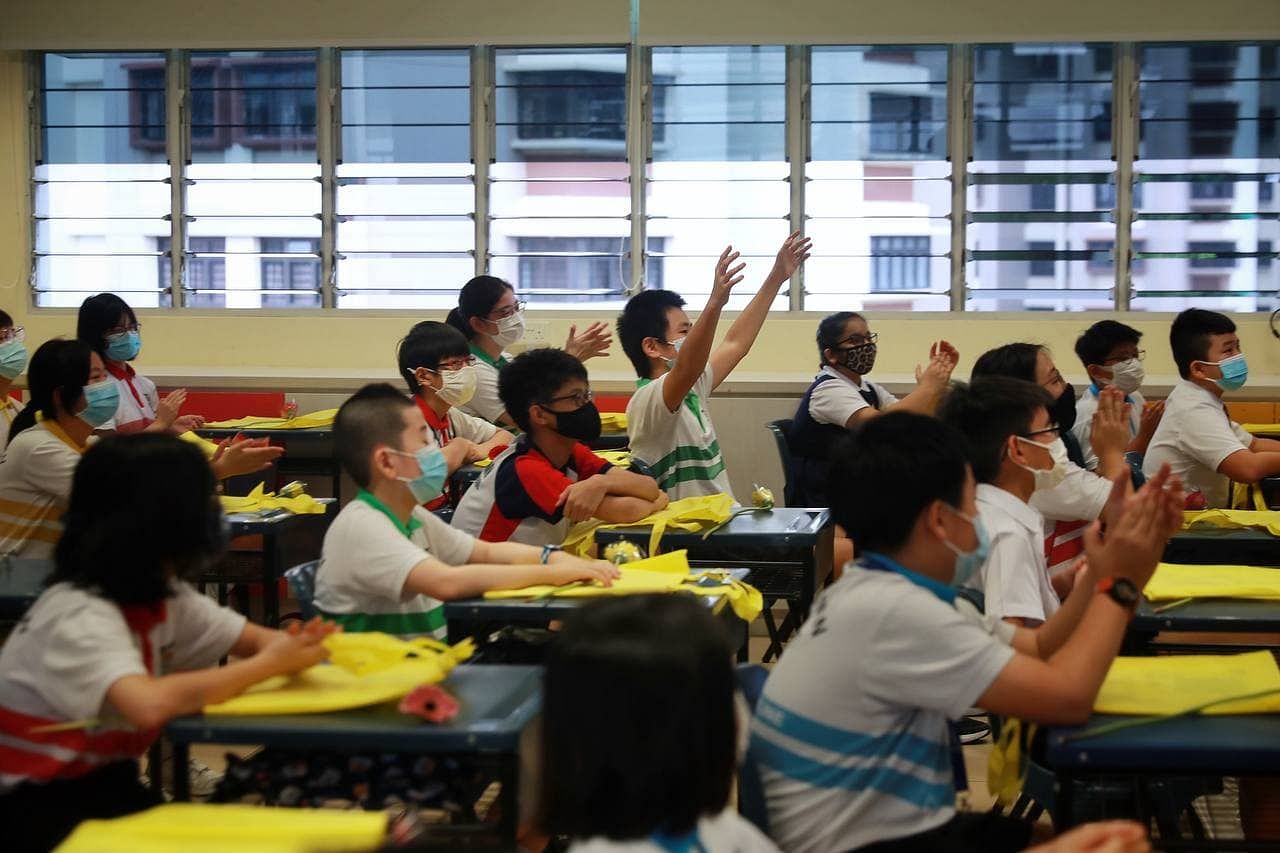New PSLE scoring system: 98.4% of students progress to secondary school


SINGAPORE - After nearly 50 years, the Primary School Leaving Examination (PSLE) T-score, or transformed score, came to an end with more pupils making the cut for the Express course under a new scoring system.
The class of 2021 also saw 98.4 per cent of pupils doing well enough to progress to secondary school.
It matches the figures recorded from 2016, and remains the best performance since the national exam was introduced in 1960.
Of the pupils in the inaugural batch, 68.4 per cent qualified for the Express course, the Ministry of Education (MOE) said on Wednesday (Nov 24).
This is slightly higher than the 66.3 per cent who made the grade last year.
Another 18.9 per cent of this year's cohort are eligible for the Normal (Academic) level, down from 21.2 per cent last year.
And 11.1 per cent are eligible for the Normal (Technical) course, similar to last year's 11 per cent.
A total of 39,119 Primary 6 pupils sat the PSLE this year.
Mr Wong Siew Hoong, MOE's director-general of education, said: "The outcomes under the Achievement Levels (AL) scoring system have remained very stable.
"So we hope that students and parents will feel assured about the PSLE and the new AL scoring system.
"We made a deliberate shift away from the old T-score system so that students do not chase the last mark. An obsessive over-emphasis on examination results is not healthy for the development of our children."
Under the new scoring system, each standard-level PSLE subject is scored using eight bands known as ALs.
Each pupil is given AL scores from one to eight for each subject, instead of grades like A* to E.
Instead of the previous T-scores, a pupil's total PSLE score is now the sum of the AL of each of the four subjects, with the best possible total score being four.
A key feature of this new system, first announced in 2016, is that pupils will be graded based on their individual performance in the subjects, regardless of how their peers have done.
The MOE said that the new PSLE scoring also aims to reduce fine differentiation of pupils' examination results at a young age and allow them and their parents to explore a wider range of secondary schools.

The ministry added that 65 per cent of pupils in this year's cohort who qualified for the Normal course have the option of taking at least one subject at a more demanding level in Secondary 1.
This compares with 47 per cent in last year's cohort.
This is the first time MOE is releasing such figures, which it said is a move to encourage more secondary school students to take up subjects at a higher level based on their strengths.
Under the new scoring system, the qualifying criteria for subject-based banding, or for students to take higher-level subjects, has been relaxed.
For instance, they can take an Express-level subject if they score AL 5 or above for a standard-level PSLE subject. In the past, the requirement was an A or A*.
Said Mr Wong: "We hope that the new AL scoring system together with the changes we are making under the full subject-based banding in our secondary schools over the next few years will make students' learning even more meaningful."
Parents and students can use the indicative PSLE score ranges for schools released in April as a starting point when considering their secondary school choices.
They are also encouraged to look at other factors like the schools' strengths, their distinctive programmes and co-curricular activities, the MOE said.

This article was first published in The Straits Times.